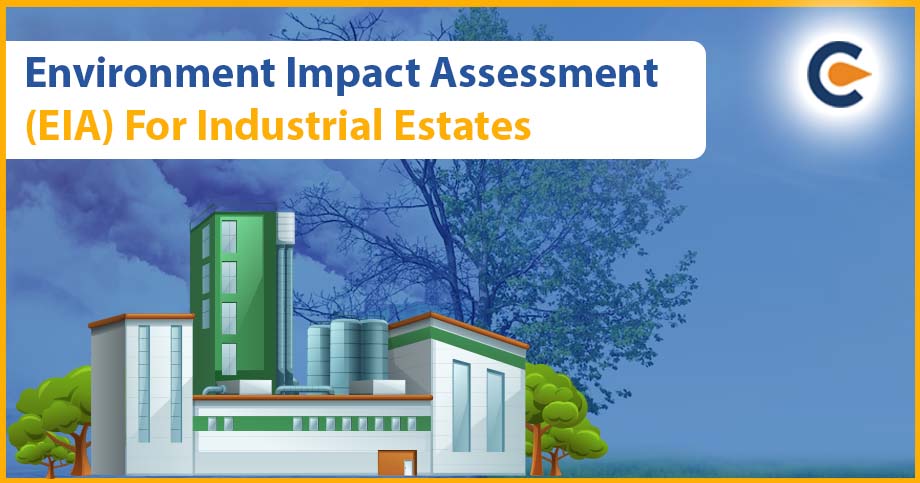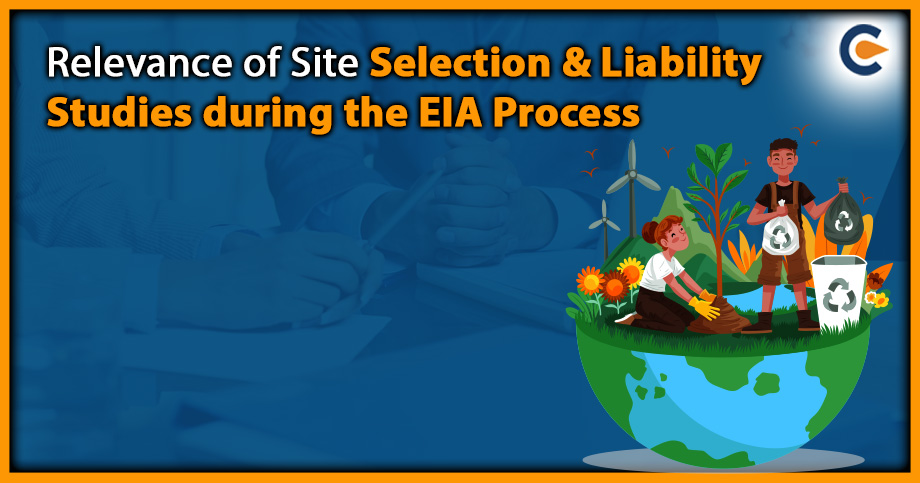An Environmental Impact Assessment (EIA) for Industrial Estates is a process that aims to evaluate and identify the potential environmental impacts of developing and operating an industrial estate. The EIA process involves assessing the project’s potential impacts on air quality, water quality, soil quality, biodiversity, and human health and identifying potential risks associated with the project, such as releasing pollutants and waste disposal. The EIA report typically includes a description of the proposed project, an assessment of the potential environmental impacts, and a mitigation plan to address any negative impacts. The purpose of an EIA for Industrial Estates is to ensure that the development and operation of the industrial estate are environmentally sustainable and responsible and to promote transparency and public participation.
Salient Features of Effective EIA for Industrial Estates
The salient features of effective EIA for Industrial Estates are:
- Comprehensive Scoping: A critical aspect of EIA is the scoping stage, which involves identifying the potential impacts of the proposed industrial estate on the environment and local communities. Conducting a thorough and comprehensive scoping exercise is essential to identify and evaluate all potential impacts. This includes engaging with stakeholders, including local communities, to understand their concerns and perspectives.
- Robust Impact Assessment: The impact assessment is the heart of the EIA process and should be conducted thoroughly and with a high level of scientific rigour. The assessment should consider both the direct and indirect impacts of the proposed industrial estate on the environment and local communities, as well as the cumulative impacts of existing and future developments in the area.
- Effective Mitigation and Monitoring: The EIA process should identify appropriate mitigation measures to avoid or minimise potential impacts. These measures should be practical, effective, and tailored to the specific circumstances of the proposed industrial estate. Additionally, monitoring should be implemented to ensure that mitigation measures are implemented as planned and effectively reduce impacts. This will help to ensure that the industrial estate operates in a sustainable and environmentally responsible manner.
An effective Environmental Impact Assessment (EIA) process for industrial estates requires comprehensive scoping, robust impact assessment, and effective mitigation and monitoring measures. Through careful planning and implementation, the EIA process can promote sustainable development and minimise the negative impacts of industrial activities on the environment and local communities.
Process of Obtaining EIA from Industrial Estates
In India, the process of conducting an Environmental Impact Assessment (EIA) for Industrial Estates involves the following steps:
- Submission of Application: The project proponent applies for environmental clearance (EC) to the Ministry of Environment, Forest and Climate Change (MoEF&CC) or State Level Environmental Impact Assessment Authority (SEIAA) in the prescribed format.
- Screening: The MoEF&CC or SEIAA screens the application to determine whether the project requires an EIA. This is based on the category of the project and the size of the proposed industrial estate.
- Scoping: If the project is deemed to require an EIA, the next step is scoping. This involves identifying the potential environmental impacts that need to be assessed and establishing the scope of the EIA study.
- Baseline Data Collection: The project proponent conducts a baseline data collection to gather information on the proposed industrial estate’s environmental conditions.
- Public Consultation: The project proponent conducts a public consultation process to obtain feedback from stakeholders, including local communities and non-governmental organisations.
- Preparation of EIA Report: The project proponent prepares an EIA report that includes an assessment of the potential environmental impacts of the proposed industrial estate, a mitigation plan to address any negative impacts, and a summary of the public consultation process.
- Review and Clearance: The EIA report is reviewed by the MoEF&CC or SEIAA, which may request additional information or clarification from the project proponent. Environmental clearance (EC) may be granted if the report is satisfactory.
Documents Required To Obtain EIA for Industrial Estates
In India, the Environmental Impact Assessment (EIA) process for Industrial estates is governed by the Ministry of Environment, Forest and Climate Change (MoEF&CC) under the Environmental Impact Assessment Notification 2006. The following documents are typically required to obtain EIA for Industrial estates in India:
- Project Proposal: This document provides a detailed description of the proposed industrial estate, including the type of industries to be established, their location within the estate, and the scale of the development.
- Environmental Impact Assessment Report: This report provides a comprehensive analysis of the potential environmental and social impacts of the proposed industrial estate, including its possible effects on air, water, soil, biodiversity, and human health. The report should also describe mitigation measures to avoid or minimise impacts.
- Environmental Management Plan: This plan outlines the measures to be taken to manage and mitigate the environmental impacts of the proposed industrial estate. This includes measures for air pollution control, wastewater treatment, waste management, and biodiversity conservation.
- Public Consultation Report: This report summarises the public consultation process, including local communities and other stakeholders’ views and concerns. The report should demonstrate how these concerns have been addressed in the EIA report and environmental management plan.
- Environmental Clearance Certificate: This certificate is issued by the MoEF&CC[1] or the State Environmental Impact Assessment Authority (SEIAA) and indicates that the proposed industrial estate has been assessed and found to be environmentally sound.
Objectives of Obtaining EIA for Industrial Estates
Objectives of EIA for Industrial Estates are as follows:
- Ensures Compliance With Environmental Regulations: Many countries require industrial projects to undergo an EIA before approval. This process helps to ensure that the project follows environmental regulations and standards.
- Identifies Potential Environmental Impacts: The EIA process helps to identify potential environmental impacts of the industrial estate, such as air and water pollution, noise pollution, and land use changes. These impacts can then be addressed through appropriate mitigation measures.
- Protects Human Health And The Environment: The EIA process helps to protect human health and the environment by identifying potential hazards and risks associated with the industrial estate. This information can be used to minimise or eliminate these risks through appropriate management and mitigation measures.
- Engages Stakeholders: The EIA process allows stakeholders, including local communities and other interested parties, to participate in decision-making and voice their concerns. This helps to ensure that the project is acceptable to all stakeholders and promotes transparency in decision-making.
- Enhances Project Sustainability: The EIA process helps to strengthen the sustainability of the industrial estate by identifying potential environmental, social, and economic impacts and promoting the use of best practices and technologies to minimise these impacts.
Conclusion
EIA for industrial estates involves thoroughly analysing the proposed project’s potential impacts, including identifying potential impacts and developing strategies to mitigate or avoid them. To address their concerns, the process involves consultation with stakeholders, including local communities and relevant authorities. Implementing EIA for industrial estates is a necessary step towards sustainable development, and its use should be encouraged in all industrial projects. Through careful planning, consultation, and implementation, industrial estates can operate to balance economic growth with environmental and social responsibility.
Also Read:
Types Of Environmental Impact Assessment
How To Get Green Building Certification In India?
Moef&CC Guidelines On EIA For River Valley Projects











